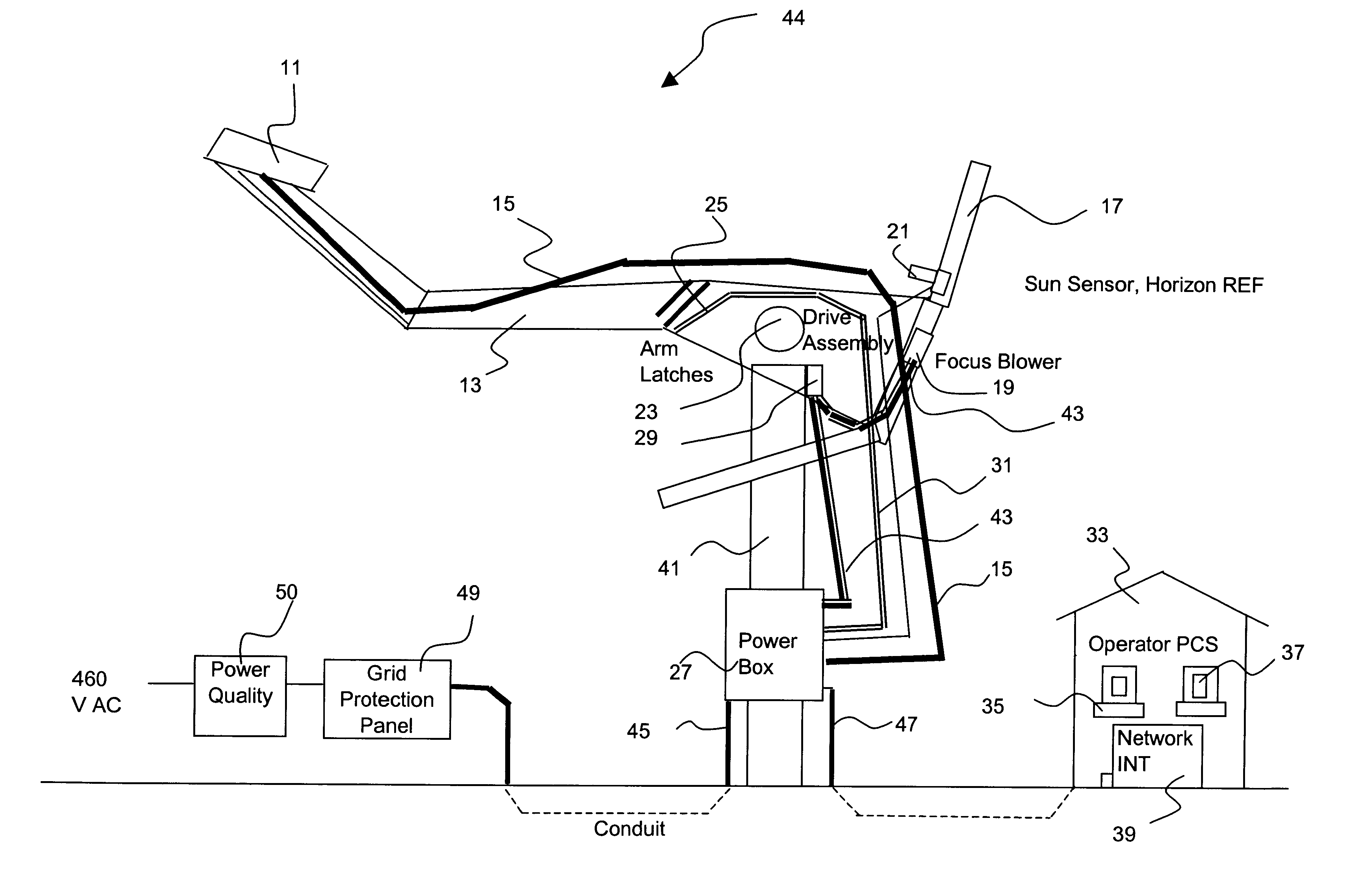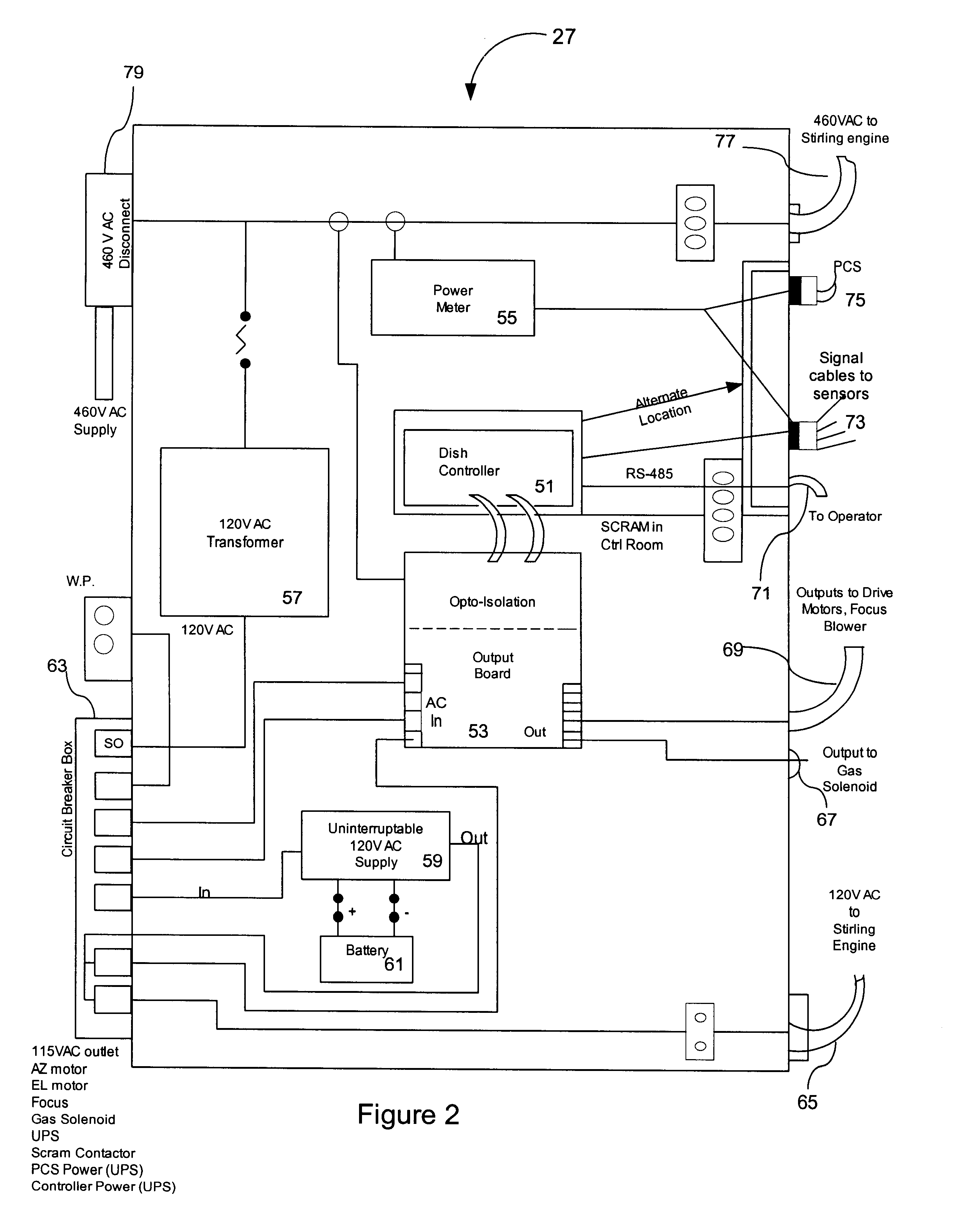Method and system for controlling operation of an energy conversion device
a technology of energy conversion device and solar collector, which is applied in the direction of machines/engines, transportation and packaging, light and heating equipment, etc., can solve the problems of inability to accurately damage to solar collector systems, and difficulty or inability to correctly issue new commands or instructions
- Summary
- Abstract
- Description
- Claims
- Application Information
AI Technical Summary
Benefits of technology
Problems solved by technology
Method used
Image
Examples
Embodiment Construction
The following example of an embodiment of the invention is provided for illustration.
Referring again to FIG. 1, multiple solar collector systems 44 may be connected to a serial network over which commands are received from the operator terminal 35 and status information is transmitted to the operator terminal 35 from multiple solar collector systems 44. Serial data transmission is provided.
Stirling Engine Communications
A dedicated serial connection connects the dish controller and the Stirling engine controller. A serial connection comes from the Stirling engine controller and is connected to the computer network 39 at the user station 33. Electrical isolation between the Stirling engine controller and the dish system controller and the dish controller and the serial link to the Stirling computer network 39 is provided.
Electrical Power Input
The solar collector system 44 accepts and supplies alternating current ("AC") power as follows:
The grid protection panel 49 is equipped with rel...
PUM
 Login to View More
Login to View More Abstract
Description
Claims
Application Information
 Login to View More
Login to View More - R&D
- Intellectual Property
- Life Sciences
- Materials
- Tech Scout
- Unparalleled Data Quality
- Higher Quality Content
- 60% Fewer Hallucinations
Browse by: Latest US Patents, China's latest patents, Technical Efficacy Thesaurus, Application Domain, Technology Topic, Popular Technical Reports.
© 2025 PatSnap. All rights reserved.Legal|Privacy policy|Modern Slavery Act Transparency Statement|Sitemap|About US| Contact US: help@patsnap.com



